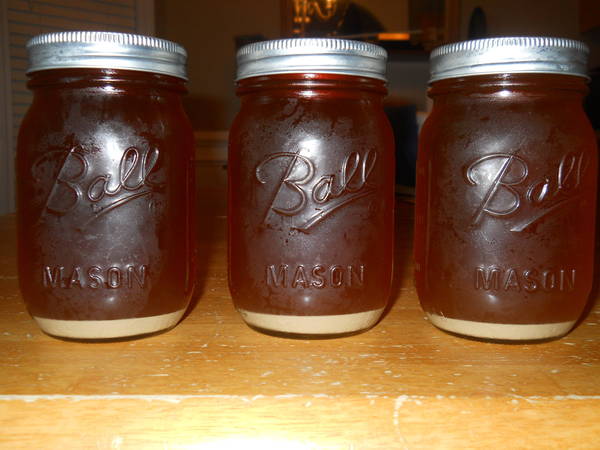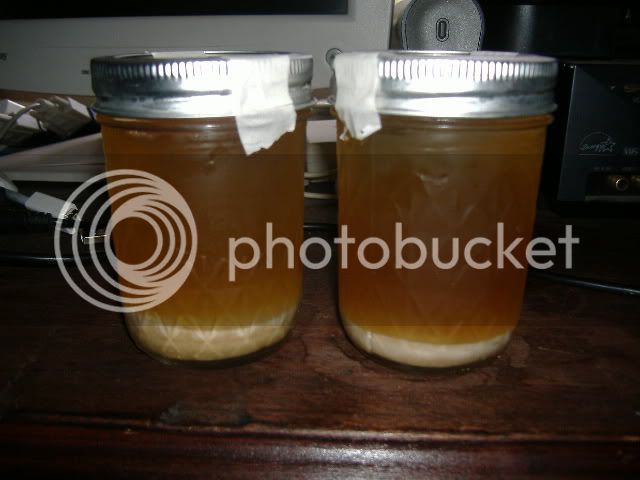So I had a nice Pale Ale with WL 029 (Kolsch) yeast where I washed the yeast.
Unfortunately my jars don't look like they have as much yeast as the other photos I've seen on this thread, and I'm not sure why (or if it's even that bad). The two things I've thought of are that I have a Coopers fermenter and I just use the spigot on the side to get the water into the large jar after letting it settle, and I waited maybe 10 or 20 min longer to transfer between the different vessels.
Anyways, regardless of my technique, I'll keep trying, but I need to get an idea if I have enough of this yeast to use down the road. I have 1 pt jars, and they all have about the same amount of yeast.
Can anyone tell me from the photo below if it's enough to get a (2L) starter going? Or will I need to step it up? Or what?

Thanks for your help! And for the technique as well!
Unfortunately my jars don't look like they have as much yeast as the other photos I've seen on this thread, and I'm not sure why (or if it's even that bad). The two things I've thought of are that I have a Coopers fermenter and I just use the spigot on the side to get the water into the large jar after letting it settle, and I waited maybe 10 or 20 min longer to transfer between the different vessels.
Anyways, regardless of my technique, I'll keep trying, but I need to get an idea if I have enough of this yeast to use down the road. I have 1 pt jars, and they all have about the same amount of yeast.
Can anyone tell me from the photo below if it's enough to get a (2L) starter going? Or will I need to step it up? Or what?

Thanks for your help! And for the technique as well!






